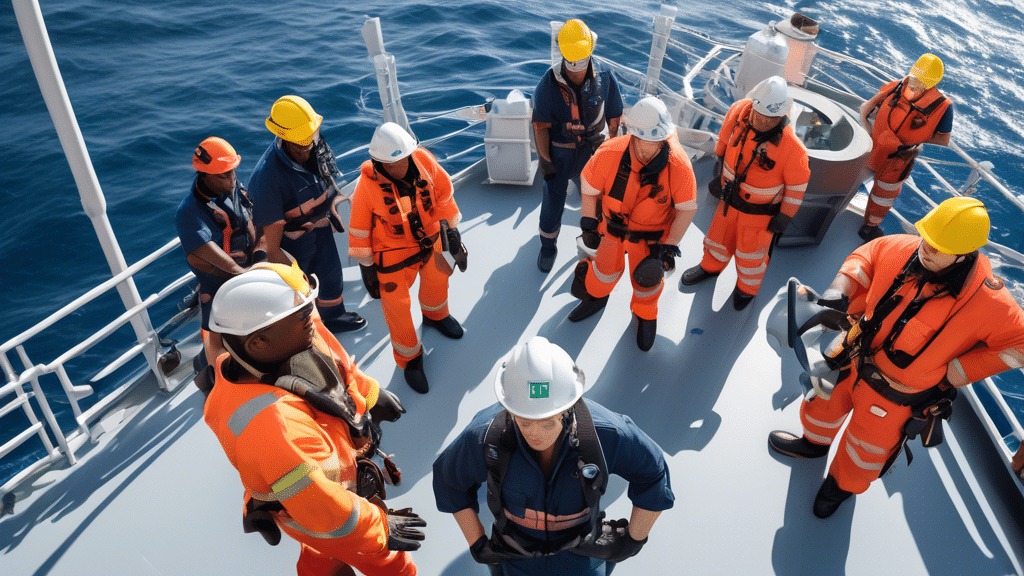In the maritime industry, emergencies can escalate quickly. Whether it’s a grounding, collision, propeller damage or unexpected hull breach, fast action is essential to protect both crew and cargo and to prevent wider disruption. While surface-level response teams often take the spotlight, underwater repair teams are just as critical. These specialist crews provide essential underwater maintenance services that allow vessels to recover faster, avoid costly delays and reduce the need for emergency dry docking.
In many cases, the involvement of an underwater repair team is the difference between a manageable incident and a full-scale crisis.
The Role of Underwater Maintenance Services in an Emergency
Underwater maintenance services cover a wide range of tasks, from routine inspections to high-risk emergency repairs. During an incident, these teams are often deployed at short notice to assess and fix problems below the waterline. Their work can include:
- Hull damage assessment and repair
- Propeller and rudder inspections or removals
- Sealing and patching leaks
- Removing entanglements and debris
- Carrying out temporary structural repairs until permanent fixes can be made
Crucially, these repairs are done while the vessel remains afloat. This saves time, avoids port congestion and helps operators limit disruption to schedules. For large commercial ships, every hour offline can cost thousands in lost revenue, fuel and rerouting. Having trained divers and underwater engineers ready to respond can significantly reduce the financial and operational impact of maritime emergencies.
Why Speed Matters
In an emergency, every minute counts. A delay in underwater repair work can allow a small problem to become much more serious. For example, a minor crack in the hull might initially be stable. But if left unaddressed, wave motion and pressure could quickly widen the damage, increasing the risk of flooding or structural failure.
Rapid underwater inspection and diagnosis allow shipowners and managers to make informed decisions about the next steps. This might include temporary patching to get the vessel safely to port or confirming that the ship is seaworthy to continue its journey with minimal disruption.
A quick response is also vital for avoiding wider knock-on effects. In congested shipping lanes, an immobile vessel can disrupt port operations, cause delays for other ships and lead to penalties or reputational damage for the operator. Professional underwater maintenance services reduce this risk and help keep maritime traffic moving safely.
Supporting Salvage and Recovery Efforts
In more severe emergencies, underwater teams also support salvage operations. After a grounding or partial sinking, they help assess the structural integrity of the vessel, locate breaches and support recovery planning. This might involve underwater cutting and welding, lifting operations or the installation of cofferdams and other temporary structures to make the ship safe for recovery or towage.
Underwater specialists work closely with naval architects, salvage masters and classification societies to ensure that all repairs and reinforcements are carried out to international standards. Their work not only helps stabilise the vessel but also protects the surrounding marine environment from further damage.
Reducing the Need for Emergency Dry Docking
Dry docking is expensive and often logistically difficult, especially if a vessel is far from its home port or booked for time-sensitive deliveries. Emergency docking can also add delays to an already critical situation. Underwater maintenance services provide an alternative. In many cases, repairs can be done below the waterline using specialist equipment and certified dive teams, avoiding the need to bring the ship out of the water.
Temporary repairs may be carried out to stabilise a vessel until a full dry dock slot is available. In other cases, permanent fixes can be applied while the ship remains in service. Either way, this approach gives ship operators more flexibility and reduces both costs and disruption.
Working in Tough Conditions
Emergency repairs are rarely straightforward. Poor visibility, strong currents, extreme temperatures and dangerous structural conditions are all common challenges for underwater teams. Divers are trained not only in technical repair work but also in risk assessment and on-site problem solving. This allows them to make safe, effective decisions even in high-pressure situations.
Many underwater maintenance service providers also use remotely operated vehicles (ROVs) or other submersible tools to assist in repairs where conditions are too dangerous for divers. These technologies allow for safer inspections and extend the range of work that can be completed offshore.
Ensuring Long-Term Vessel Health
Even once the immediate emergency is resolved, the input of underwater teams remains valuable. Follow-up inspections help ensure that temporary repairs are holding, that no additional damage has occurred and that the vessel can safely resume operations until its next scheduled maintenance.
The insights gained during underwater repairs also feed into longer-term planning. For example, identifying recurring issues with hull fouling, propeller strikes or weak points in structural design can guide future upgrades or changes to maintenance schedules.
In this way, emergency underwater repair services don’t just address problems in the moment, they help improve the resilience and reliability of entire fleets.
Final Thoughts
The maritime sector depends on fast, professional responses to incidents at sea. Underwater repair teams play a crucial role in this system, offering highly specialised skills that allow ships to remain afloat, stay safe and return to operation as quickly as possible.
For shipowners, operators and port authorities, having access to reliable underwater maintenance services is not just a safety net. It is an essential part of managing risk, protecting cargo and ensuring vessels remain compliant with international standards.
As ships grow larger and maritime operations become more complex, the need for skilled underwater repair teams will only increase. Investing in these services, and integrating them into wider emergency response planning, is one of the most effective ways to keep global shipping moving when the unexpected happens.
